- Register
- Log in to Tune-In
- Wishlist (0)
-
Shopping cart
(0)
You have no items in your shopping cart.
Beatles News
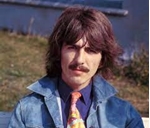
The Beatles hired someone to build them a new studio. According to George Harrison, the entire project was a disaster for the band.
In the late 1960s, George Martin, Paul McCartney, and George Harrison, among others, began voicing their concerns about someone working with The Beatles. “Magic” Alex Mardas was one of Apple Corps’ earliest employees and a friend of John Lennon. He promised them unique electronic decorations and improved recording equipment. The band enlisted him to build them a shiny new studio, a project Harrison later described as a complete disaster. George Harrison said Magic Alex Mardas was a disaster in the studio for The Beatles
As an Apple employee, Mardas grew familiar with The Beatles’ recording equipment and told them it was terribly out of date. Per the book Paul McCartney: Many Years From Now by Barry Miles, Mardas began telling them he could design a seventy-two-track studio that would be more advanced than any existing studio.
Source: Emma McKee/cheatsheet.com
details
Janis Joplin was like a fireworks display. Brilliantly explosive, colorful and stunning, bombastic and captivating, a kaleidoscopic wonder burning loud and brightly that ends nearly as soon as it starts. Like far too many others in the history of rock ‘n’ roll, Joplin’s legacy is one of admiration and contemplation.
Age 27 at the time of her tragic death, Joplin released only three albums in her lifetime. A fourth, Pearl, was posthumously released the year after her death.
Joplin’s two albums with Big Brother & The Holding Company, 1967’s self-titled debut and 1968’s Cheap Thrills, immediately established the Port Arthur, Texas native as one of the all-time iconic voices in rock ‘n’ roll. Incorporating influences from pioneering Black musicians like Big Mama Thornton, Bessie Smith and Leadbelly, Joplin’s unparalleled vocal delivery and thrilling stage performances put her in the center of the late-1960s counter-cultural movement.
Released as a solo album, I Got Dem Ol’ Kozmic Blues Again Mama! was delivered in 1969 and featured a new backing group, the the Kozmic Blues Band. In 1970, Joplin’s career evolved again as she for details

iHeartPodcasts and Pushkin will debut the much anticipated McCartney: A Life In Lyrics podcast. The 12-part series, based on the best-selling book, is hosted by the poet Paul Muldoon, who explains in the first episode, which I was given exclusively for first listen, "We worked together on a book looking at more than 150 of his songs. And we recorded many hours of our conversations. This is McCartney: A Life In Lyrics; a master class, a memoir and an improvised journey with one of the most iconic figures in popular music. Each episode is centered about the writing of a particular song and the circumstances surrounding it."
Episode one, premiering today, focuses on the song "Eleanor Rigby." But before that, McCartney offers some insight into his love of writing. An aspiring poet who was friends with the iconic poet Allen Ginsberg ("Howl"), McCartney exclaims at the outset of the 19-minute episode, "Oh my God, I wanted to become a person who wrote songs. And I wanted to be someone whose life was in music."
Source: Steve Baltin/forbes.com
details
Simon & Garfunkel's "Bridge Over Troubled Water" connects to a Beatles song George Harrison wrote. One of the songs was a much bigger hit than the other.
All roads lead to Rome — and all classic rock roads lead to The Beatles. Simon & Garfunkel’s “Bridge Over Troubled Water” has a major connection to a song from The Beatles’ Magical Mystery Tour. One of the songs blew the other out of the water commercially, no pun intended.
During a 1972 interview with Rolling Stone, Simon discussed the origin of “Bridge Over Troubled Water.” “Me and Artie [Garfunkel] and [Simon’s wife] Peggy [Harper] were living in this house with a bunch of other people throughout the summer,” he said. “It was a house on Blue Jay Way, the one George Harrison wrote ‘Blue Jay Way’ about.” The two tracks are a study in contrast, as “Blue Jay Way” is a sleepy psychedelic tune, while “Bridge Over Troubled Water” is a forceful power ballad.
“We had this Sony machine and Artie had the piano, and I’d finished working on a song, and we went into the studio,” Simon added. “I had it written on gu details
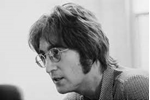
John Lennon compared "Give Peace a Chance" to Elvis Costello's "(What's So Funny 'Bout) Peace, Love, and Understanding." A rabbi inspired the former.
Some classic rock stars got credit for things they didn’t do. John Lennon’s “Give Peace a Chance” was inspired by a phrase he didn’t coin. Interestingly, the tune was inspired by a rabbi who was also a folk singer.
Source:Matthew Trzcinski/Cheatsheet
details
The run-up to Christmas and our Bristol production of The Happiest Days of Your Life seemed to drag on forever. I enjoyed doing the play, lightweight as it was. But my life was changing — Sheila, the RSC — and I wanted to get on with it.
Fortunately, we had a wonderful cast, and in it was a talented and pretty young actress with red hair named Jane Asher. Everyone knew that Jane was dating Paul McCartney, but we were all very circumspect around her and careful never to mention his name. Still, this was 1965, the year of Rubber Soul and the sold-out show at Shea Stadium in New York City. It was hard not to be starstruck by proxy.
One night after a performance, we were all sitting in the Old Duke pub when someone suggested a party game: We would go around the table, and each of us would answer the question, “If you were given a million pounds, what would be the first thing you bought with it?”
Source: Rollingstone.com
details
Best known to fans as "The Quiet Beatle," George Harrison was never one whom you can accuse of being the least significant member of arguably the greatest rock band of all time. That's because for the most part, he let his instrument do the talking, playing lead guitar parts that perfectly fit the mood of the song, may it be another one of John Lennon and Paul McCartney's many compositions, one of the Beatles' many (mostly early-period) cover tunes, or one of the few songs where his name (or Ringo Starr's) appeared on the songwriting credits. He was also a key part of the band's evolution from radio-friendly pop-rock to psychedelic experimentation, as the sitar parts he brought to some of his compositions added a new dimension to the Fab Four's increasingly eclectic sound in the mid-'60s.
details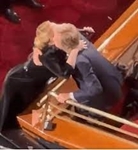
English singer-songwriter Adele has been in Las Vegas for a while now set to perform at Caesars Palace till November 4. In a recent performance, the singer shared a hug with fellow English music legend Paul McCartney who was in attendance at her show.
In a video shared by Pop Crave on their X (formerly Twitter) account, Adele can be singing while waving to the people in attendance. She moves ahead and reaches a hand towards Paul who rather takes her in for a hug.
The entire crowd in the audience can be heard hooting for the historical moment as they end their quick meetup with a handshake.
“Adele and Paul McCartney share a hug at her show in Las Vegas,” captioned the video.
There is much in common among the two British singers with both having the most songs awarded with at least one Grammy.
Source: Jahanvi Sharma/hindustantimes.com
details
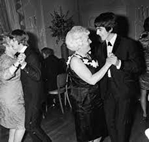
George Harrison's mom attended a 1963 Beatles concert. The fans' behavior at the show horrified and embarrassed her. She even told one of them.
George Harrison’s mom, Louise, spent much of her time corresponding with Beatles fans. She answered letters and even received a plaque for her dedication to Beatles fans everywhere. Still, she didn’t agree with all their behavior. In a letter to a fan, Harrison’s mother expressed her disgust with concertgoers.
After watching The Beatles perform at a 1963 concert, Louise Harrison could hardly believe the behavior of some audience members. At this point, The Beatles were exploding in popularity and their fans reacted fervently to their performances.
“Last Wednesday I went to Manchester and I was really disgusted at the way the so-called fans just screamed right through the whole of the Beatles act,” she wrote in a letter to a Beatles fan, per the BBC. “Nobody with any sense would pay and queue for a ticket just to stand on a seat and scream and not hear one sound from the stage.”
Source: Emma McKee/cheatsheet.com
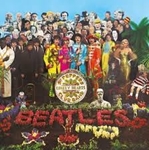
Over 200 guests attended The Malibu Library Speaker Series last week that featured composer, producer, and Beatles expert Scott Freiman.
Freiman deconstructed the Beatles’ “Sgt. Pepper’s Lonely Hearts Club Band.” The album is known for its unsurpassed adventure in concept, sound, songwriting, cover art and studio technology.
The Beatles were an English rock band formed in Liverpool in 1960, comprising John Lennon, Paul McCartney, George Harrison, and Ringo Starr. They are known as the most influential band of all time and were integral to the development of 1960s counterculture and the recognition of popular music as an art form.
In “Deconstructing Sgt. Pepper’s Lonely Hearts Club Band,” Freiman looks at “Sgt. Pepper” from multiple angles, exploring the history behind the music. He conducts an educational journey into the creative process of The Beatles performances and recording sessions.
Source: Samantha Bravo/malibutimes.com
details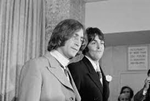
Paul McCartney was used to John Lennon's negative comments in the press by the 1970s. In the 1960s, though, he saw them as a threat to The Beatles.
After The Beatles broke up, Paul McCartney got used to reading John Lennon’s negative comments about the band in the press. He attacked their music, his former bandmates’ solo projects, and, often, McCartney’s personality. While the group was still together, though, any negative comments made by Lennon had the potential to hurt them. When McCartney read some of Lennon’s remarks about Apple Records, he lashed out at the journalist who recorded them.
Source: Emma McKee/cheatsheet.com
details
In the summer of love, on a hot July day, John Lennon was sitting by a lake in central Greece. The Beatles were on their way to Delphi, via the mountain village of Arachova. Lennon, who was splayed across the grass next to his first wife, Cynthia, and their young son, Julian, appeared to be lost in thought.
The rest of the band were lapping up the rays, knocking back beers and splashing about in the lake. Labis Tsirigotakis, then a cub reporter on the Greek daily, To Vima, realised this was his big chance. Sensing a scoop, he moved closer. “John, can I ask you a few questions?” he asked.
“No problem, I’m happy to meet you,” came the response as Lennon, looking up from his Orwell novel, contemplated Tsirigotakis’ next question on his “impressions of Greece”.
What followed was an outburst so impassioned it took the reporter aback: “Unfortunately the social inequalities in England are so big it wounds me psychologically. Greece is a wonderful country, fantastic climate, great people … and that’s why we are seriously thinking of buying a small Greek island and setting up our own hippy commune where we could live undisturbed for half of the ye details
here are rock stars, and then there is Ringo Starr — drummer for the Beatles, award-winning soloist, photographer, narrator, actor, activist. To call him prolific would almost shortchange his accomplishments. But it also feels right.
“Rewind Forward,” out October 13, is his fourth extended play release in three years.
“I’ve loved EPs since they first came out in the ’60s,” he says of the format. “And then I heard the kids are making EPs and thought, ‘That’s good!’”
The title is a classic “Ringoism,”
as John Lennon used to refer to his malapropisms, an unusual phrase ripped from the same mind that came up with “A Hard Day’s Night” and “Tomorrow Never Knows.”
Assigning profundity to it came later. “I think it means that, you know, you’re sitting still for a while. You rewind and you find out ‘I was a much better person then,’ or ‘this was working for me better then,’ he says.
Source: MARIA SHERMAN/apnews.com
details
Peter Frampton recently appeared on VRP Rocks to share how he was invited to play in late George Harrison’s ‘All Things Must Pass.’ During the interview, the guitarist recalled recording for Dorris Troy and shared his experience with meeting Harrison for the first time.
After Frampton was invited to Harrison’s studio session, Harrison asked him whether or not he would like to play guitar for Troy’s ‘Ain’t That Cute.’ After sharing that he accepted the offer, he went on to explain what happened in the studio:
“So I’m just playing very quiet rhythm because this is the Beatles lead guitar player here and there is Stephen Stills. So I think I had to just sort of be in the background here, and then halfway through, George stops, and he goes, ‘Pete, no! Man, I want you to play the lead licks.’ and so I said, ‘Oh my god, this is too good to be true.’
So anyways, if you listen to ‘Ain’t That Cute,’ which is the lead track of the album, Dorris Troy’s album, I’m playing the intro, and the lick keeps coming back every time, and then George did a little slide solo on it afterwards.”
Source: details

The Beatles star was stabbed multiple times by an intruder at his home in 1999, and now his widow Olivia has revealed George's obsessions prevented fatal wound
When George Harrison was the victim of a frenzied knife attack, he was saved by some paper with song lyrics on, his wife Olivia says.
She said the notes, which were in a pocket in front of his heart, were folded thick enough to protect the organ during the stabbing. The couple were attacked at their home in Henley-on-Thames, Oxon, in 1999 by intruder Michael Abram. Beatles legend George was stabbed dozens of times including to the chest.
Olivia tells a Radio 3 show being aired on Sunday: “He had notes in a pocket right over his heart and he had them folded. You can only fold paper so many times. He had them folded and stuck in the pocket and it’s what saved him... Gardening notes and lyrics were his passions and they saved his life.”
Source: Mark Jefferies/mirror.co.uk
details